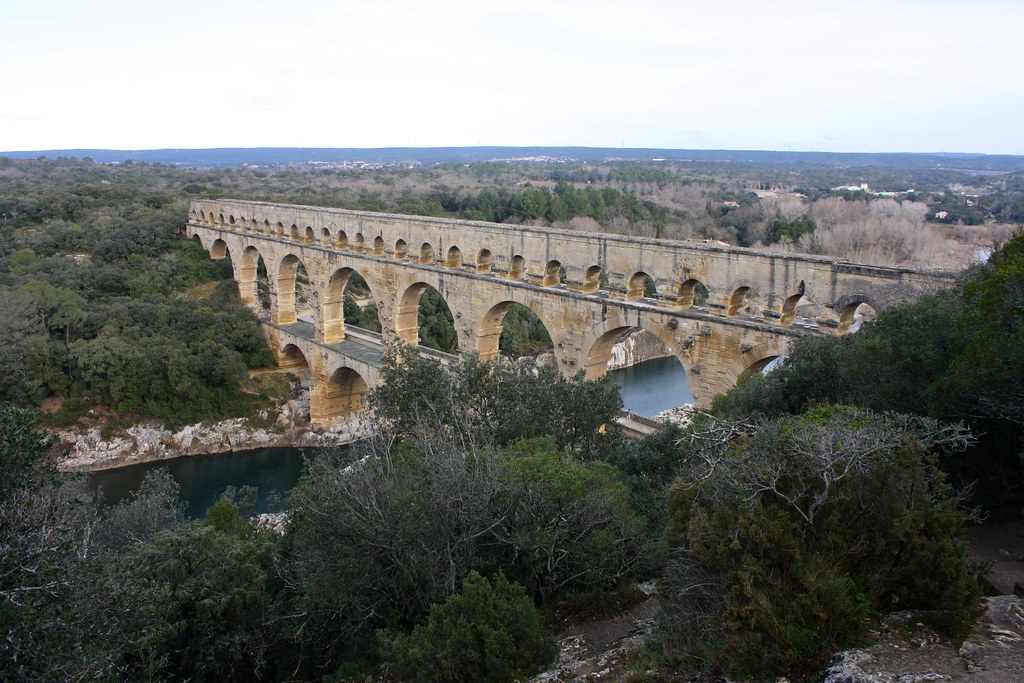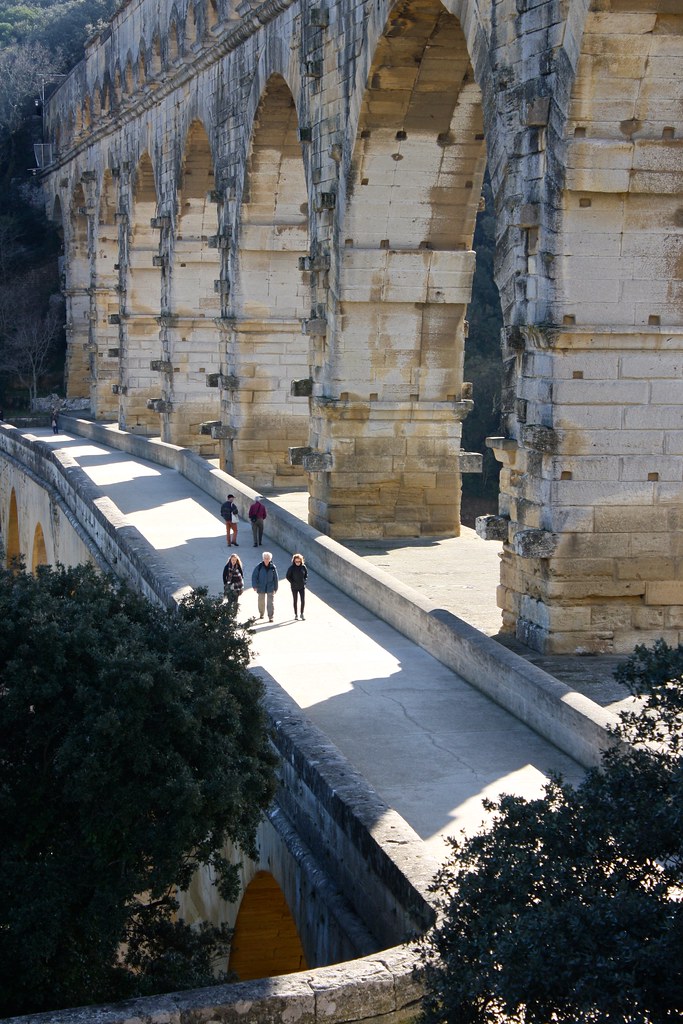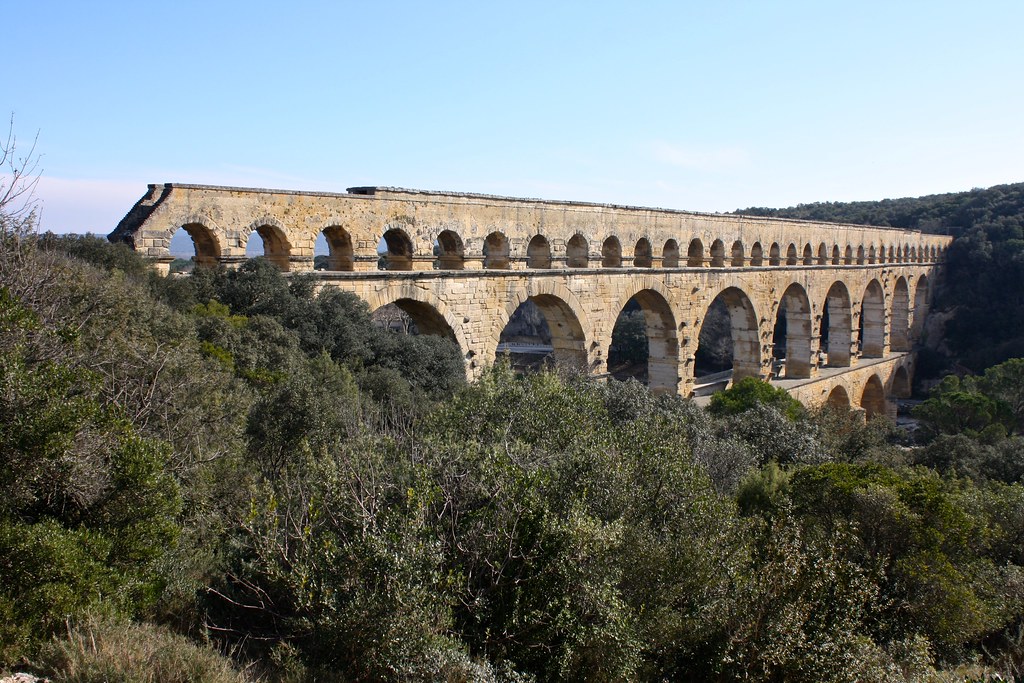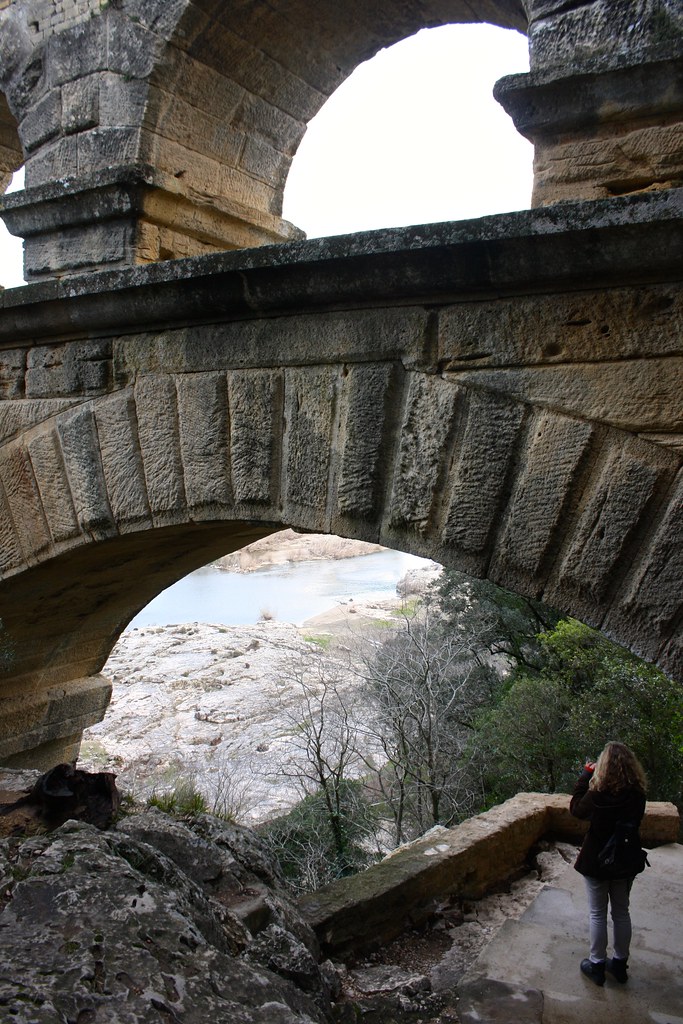It’s no secret on this blog that I’m a big fan of
Roman ruins—see my posts on the aqueduct of
Segovia, the lost city of
Pompeii, and the amphitheater of
Nîmes, just to name a few. So it was only natural for me and my traveling friend Melissa to make a daytrip last year from
Avignon in
southern France to one of the most emblematic of all French monuments: the
Pont du Gard. This Roman site’s elegant name (pronounced “pon dew gahr” [pɔ̃ dy gaʁ]) belies the fact that it simply functioned as a bridge to carry spring-fed water over the Gardon River to the Roman city of
Nemausus (modern Nîmes).
This feat of Roman engineering left Melissa and me astonished at just how huge it was: 48.8m high (160 feet) and 275m long (902 feet) on the upper deck. Dressed limestone blocks still hold the structure together
without any mortar at all, almost two millennia after construction, while the aqueduct’s channel imperceptibly drops an inch in altitude from one end of the bridge to the other. The same gravity that drew water from upstream sources in Roman times still holds the arches together today.
Of course, any monument this impressive and famous naturally attracts hordes of tourists, and those tourists come by the bus-load. February may have been as low as low season gets, but Melissa and I still had to evade two whole tour buses…even at nine in the morning! Fortunately for us, there were
pleasant hiking trails that led up the hillside, where we enjoyed head-on views of the bridge in peace…far away from the selfie-stick-wielding crowds below.
How to get there
If you’re coming from Avignon, hop on the
A15 bus, which leaves the bus station at 8:45am and arrives at the “
Rond Point Pont du Gard” stop (a non-descript roundabout) in the village of Vers-Pont-du-Gard around 9:21am. It comes back to pick you up at 1:20pm, leaving you plenty of time to get your Instagram shots in, go hiking, check out the modern, informative museum, and even sneak in a bite or two of an
éclair beneath a thousand-year-old Spanish olive tree.
What was your favorite photo from this post? What’s your favorite Roman ruin? Tell me down below in the comments section!









